The Prairie Provinces are comprised of: Alberta (15,795), Manitoba (14,345), and Saskatchewan (1,905).
Alberta
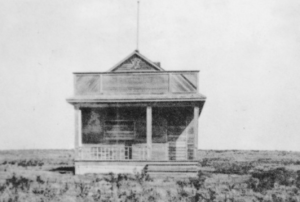 Permanent settlement in Alberta began the 1880s due to: the extension of the Canadian Pacific Railway into Western Canada and the terrible pogroms against East European Jews following Alexander III’s ascension to the throne in 1881. In 1882, around 150 Russian Jews worked on the CPR’s railway gang, laying 100 miles of track to Medicine Hat. It was reported that they kept the Sabbath, ate kosher food, had a Torah scroll for services, and were directed by a Yiddish-speaking foreman.
Permanent settlement in Alberta began the 1880s due to: the extension of the Canadian Pacific Railway into Western Canada and the terrible pogroms against East European Jews following Alexander III’s ascension to the throne in 1881. In 1882, around 150 Russian Jews worked on the CPR’s railway gang, laying 100 miles of track to Medicine Hat. It was reported that they kept the Sabbath, ate kosher food, had a Torah scroll for services, and were directed by a Yiddish-speaking foreman.
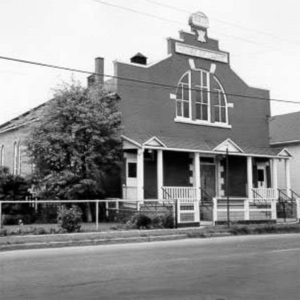 The first permanent Jewish residents, were brothers, Jacob Lyon Diamond and William Diamond. In 1888, Jacob Diamond moved to Calgary and worked as a pawnbroker and traded liquor and hides. William opened a tailor shop in Calgary in 1892.
The first permanent Jewish residents, were brothers, Jacob Lyon Diamond and William Diamond. In 1888, Jacob Diamond moved to Calgary and worked as a pawnbroker and traded liquor and hides. William opened a tailor shop in Calgary in 1892.
The brothers initiated the first formal Jewish service for the High Holidays in 1894 and founded many of the Calgary community’s institutions, such as its cemetery in 1904. Jacob Diamond established Calgary’s first synagogue, Beth Jacob, in 1911. William Diamond was instrumental in establishing the first Jewish religious council in Alberta in 1906, a year after his move to Edmonton.
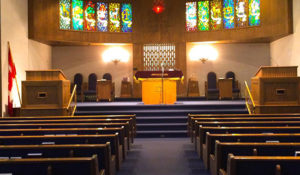 By 1911, there were 1,207 Jews in the province, with more than half of them in the two major cities. Aside from Edmonton and Calgary, larger Jewish communities were also established in Lethbridge and Medicine Hat.
By 1911, there were 1,207 Jews in the province, with more than half of them in the two major cities. Aside from Edmonton and Calgary, larger Jewish communities were also established in Lethbridge and Medicine Hat.
As it took many years for these communities to acquire a synagogue building, services were conducted for years in people’s homes. In 1921, there were 3,186 Jews in Alberta. By 1931, 92 percent of Alberta’s 3,700 Jews lived in urban settings.
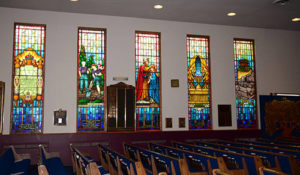 Antisemitism was a fact of life in the Canadian government’s immigration policy until after World War II, however, Jews in Alberta did not face enrollment quotas in professional schools as did Jews in Manitoba, Ontario, and Quebec. Discrimination was not blatant and organized but existed at an informal level.
Antisemitism was a fact of life in the Canadian government’s immigration policy until after World War II, however, Jews in Alberta did not face enrollment quotas in professional schools as did Jews in Manitoba, Ontario, and Quebec. Discrimination was not blatant and organized but existed at an informal level.
Holocaust survivors, some left alone in the world and others related to Calgary families, started new lives in southern Alberta. Calgary Jews enjoyed a major building boom beginning in 1959. During a three-year period, they built two synagogue buildings, two schools, and a memorial chapel.
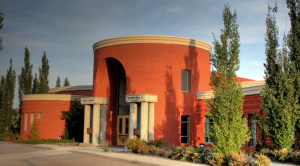 By 1961, nearly 3,000 Jews lived in Calgary. Within 20 years, Calgary’s Jewish population doubled. Alberta’s economic growth attracted newcomers from Ontario and Quebec, as well as from other countries, including Israel, South Africa, and the United States. Large numbers of Jews from the Soviet Union also found their way to Calgary. Population shifts proved bittersweet, however, as the Jewish communities of Medicine Hat and Lethbridge dwindled during these decades.
By 1961, nearly 3,000 Jews lived in Calgary. Within 20 years, Calgary’s Jewish population doubled. Alberta’s economic growth attracted newcomers from Ontario and Quebec, as well as from other countries, including Israel, South Africa, and the United States. Large numbers of Jews from the Soviet Union also found their way to Calgary. Population shifts proved bittersweet, however, as the Jewish communities of Medicine Hat and Lethbridge dwindled during these decades.
Alberta’s Jewish population grew slowly through the war years and into the postwar era but prosperity in the 1970s led to a significant increase in the number of Jews in the province, primarily in Edmonton and Calgary. With that growth came the development of large Jewish community centres and Reform temples in both cities.
Manitoba
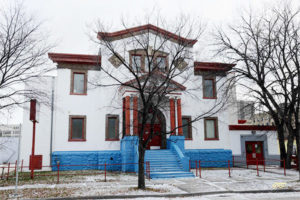 In 1877 the first known Jewish residents of Manitoba were Reuben Goldstein, a peddler, and Edmond Coblentz, a clerk, from Alsace-Lorraine. The 1881 Canadian census listed 33 Jews in Manitoba, 21 of them in Winnipeg.
In 1877 the first known Jewish residents of Manitoba were Reuben Goldstein, a peddler, and Edmond Coblentz, a clerk, from Alsace-Lorraine. The 1881 Canadian census listed 33 Jews in Manitoba, 21 of them in Winnipeg.
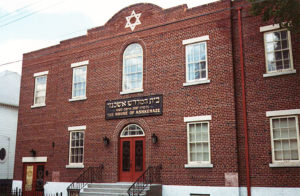 The Russian anti-Jewish outbreaks of 1881 and 1882 caused about three hundred Jews to settle there in the latter year, most of whom worked upon the Canadian Pacific Railway.
The Russian anti-Jewish outbreaks of 1881 and 1882 caused about three hundred Jews to settle there in the latter year, most of whom worked upon the Canadian Pacific Railway.
During the course of construction, subsequent persecutions of the Jews in eastern Europe sent periodic waves of Jewish immigration to the Manitoban capital. In 1898 and 1899 there was an influx from Rumania, and from 1903 to 1905 there was a further considerable number of settlers from Russia. Jewish religious services in Manitoba were first held on Yom Kippur in 1879, in a private Winnipeg home. Regular Sabbath services began after the arrival of the Russian Jews in 1882. Winnipeg possesses six Jewish congregations.
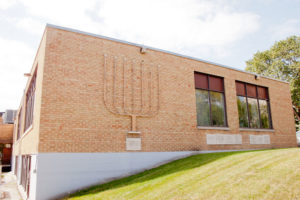 The earliest was the B’nai Israel, established in 1883, and then came Congregation Beth-El, founded in 1885; in 1889 these two congregations amalgamated under the name “Shaary Zedek,” and built a synagogue in King street. Congregation Rosh Pina was organized in 1890, with a synagogue on Martha street, Congregation B’nai Israel, in 1893, with a synagogue on Martha street; and Congregation Beth Jacob, in 1902, with a synagogue on Schultz street. In 1904 the Holy Blossom congregation came into existence, and was reorganized the following year under the name “Shaar Hashamoyim”; and Congregation Adas Yeshurun was founded in 1905.
The earliest was the B’nai Israel, established in 1883, and then came Congregation Beth-El, founded in 1885; in 1889 these two congregations amalgamated under the name “Shaary Zedek,” and built a synagogue in King street. Congregation Rosh Pina was organized in 1890, with a synagogue on Martha street, Congregation B’nai Israel, in 1893, with a synagogue on Martha street; and Congregation Beth Jacob, in 1902, with a synagogue on Schultz street. In 1904 the Holy Blossom congregation came into existence, and was reorganized the following year under the name “Shaar Hashamoyim”; and Congregation Adas Yeshurun was founded in 1905.
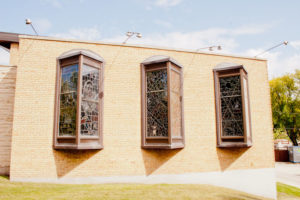 Synagogues were also established in Brandon in 1906, Portage la Prairie in 1908 and, in Winnipeg Beach in 1951. The first two synagogues have long been closed; the latter opens every summer. Rosh Pina Synagogue in Matheson amalgamated with other synagogues in 2002-2004, to form Etz Chaim, when the community bought the Jewish orphanage, which was no longer needed.
Synagogues were also established in Brandon in 1906, Portage la Prairie in 1908 and, in Winnipeg Beach in 1951. The first two synagogues have long been closed; the latter opens every summer. Rosh Pina Synagogue in Matheson amalgamated with other synagogues in 2002-2004, to form Etz Chaim, when the community bought the Jewish orphanage, which was no longer needed.
Anti-Semitism and racism had certain respectability among most segments of Canadian society at least until the 1960s. In Manitoba and across the country, Jews found many professions and jobs closed to them. From 1932 to 1944, the University of Manitoba’s Faculty of Medicine instituted a quota system against Jews, and there were no Jewish public school principals until 1944.
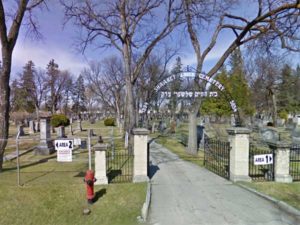 The total number of Jews in Manitoba, including Winnipeg, grew from 33 in 1881, to 791 in 1891 and to 1,514 in 1901. By 1911 the number ballooned more than sevenfold to 10,741, then by more than half again to 16,669 in 1921. The population of Jews in Manitoba eventually reached 19,341 in 1931 and remained steady until 1971 when population numbers began a decline to 15,215 in 2001. The vast majority of these Jews lived in Winnipeg, the centre of Manitoba Jewish life. Jewish Winnipeg is an active and thriving community with over 14,000 Jews of all denominations. Over 20% of Winnipeg’s current Jewish population has immigrated to Canada from South America, Russia, and Israel over the past decade.
The total number of Jews in Manitoba, including Winnipeg, grew from 33 in 1881, to 791 in 1891 and to 1,514 in 1901. By 1911 the number ballooned more than sevenfold to 10,741, then by more than half again to 16,669 in 1921. The population of Jews in Manitoba eventually reached 19,341 in 1931 and remained steady until 1971 when population numbers began a decline to 15,215 in 2001. The vast majority of these Jews lived in Winnipeg, the centre of Manitoba Jewish life. Jewish Winnipeg is an active and thriving community with over 14,000 Jews of all denominations. Over 20% of Winnipeg’s current Jewish population has immigrated to Canada from South America, Russia, and Israel over the past decade.
Saskatchawan
 The first Jewish immigrants to Saskatchewan came in the last days of the nineteenth century. Saskatchewan’s first Jewish resident was Max Goldstein, a Russian-born tailor who opened a store in Fort Qu’Apelle in 1877.
The first Jewish immigrants to Saskatchewan came in the last days of the nineteenth century. Saskatchewan’s first Jewish resident was Max Goldstein, a Russian-born tailor who opened a store in Fort Qu’Apelle in 1877.
The Jewish population in Saskatchewan has never been large. At its peak, in 1931, the Jewish population was 5,047. Since then it has gradually declined to about 2,000. Regina, the capital of Saskatchewan, had only 9 Jews in 1891 yet that number gradually grew to a peak of over 1,000 in 1931 and just as gradually declined to about 400 present day.
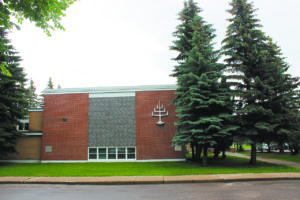 The first organizational meeting to establish a Jewish community took place at the home of Jacob Shachter in 1905 and the congregation was named, the Beth Jacob Congregation. In 1913 the corner stone for a synagogue was laid. In 1901, there were a total of 198 Jews. The first settlement was formed near Moosomin, also called New Jerusalem, in 1882.
The first organizational meeting to establish a Jewish community took place at the home of Jacob Shachter in 1905 and the congregation was named, the Beth Jacob Congregation. In 1913 the corner stone for a synagogue was laid. In 1901, there were a total of 198 Jews. The first settlement was formed near Moosomin, also called New Jerusalem, in 1882.
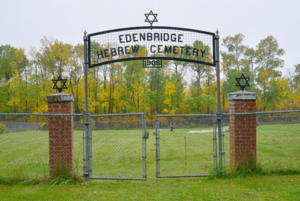 The oldest established Jewish colony was formed near Wapella in 1888. By 1892 there were 20 families. Wapella was followed by the colony at Hirsch near Estevan in 1892, where the first Synagogue in Saskatchewan was built. It is home to the oldest Jewish cemetery in the Province, and initially hosted 47 families from Russia. The Lipton colony came in 1901, with 40 families, and in 1906, Edenbridge was founded, then colonies at Sonnenfeld (1906) and Hoffer. In 1926, the Canadian Pacific Railroad finally reached the colony of Sonnenfeld.
The oldest established Jewish colony was formed near Wapella in 1888. By 1892 there were 20 families. Wapella was followed by the colony at Hirsch near Estevan in 1892, where the first Synagogue in Saskatchewan was built. It is home to the oldest Jewish cemetery in the Province, and initially hosted 47 families from Russia. The Lipton colony came in 1901, with 40 families, and in 1906, Edenbridge was founded, then colonies at Sonnenfeld (1906) and Hoffer. In 1926, the Canadian Pacific Railroad finally reached the colony of Sonnenfeld.
Eventually synagogues were built in Canora, Edenbridge, Estevan, Hirsch, Yorkton, Kamsack, Lipton, Melfort, Melville, Moose Jaw, North Battleford, Prince Albert, Regina, Rosthern, Saskatoon, and Sonnenfeld. The Kamsack synagogue was completely destroyed by a cyclone and rebuilt 1944. Synagogue buildings in Saskatchewan tended to be small, modest wooden structures.
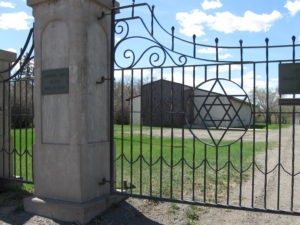 By the mid-1920s, there were Jews in Melfort, Kamsack, Yorkton, Melville, Estevan, Weyburn, North Battleford and Moose Jaw. Most of these towns had their own synagogues, Jewish cemeteries, Talmud Torahs and cultural organizations. Edenbridge was founded in 1906. It no longer exists, but some of the members of the founding families live in the area. The Beth Israel Synagogue, built by the settlers in 1908, still stands today.
By the mid-1920s, there were Jews in Melfort, Kamsack, Yorkton, Melville, Estevan, Weyburn, North Battleford and Moose Jaw. Most of these towns had their own synagogues, Jewish cemeteries, Talmud Torahs and cultural organizations. Edenbridge was founded in 1906. It no longer exists, but some of the members of the founding families live in the area. The Beth Israel Synagogue, built by the settlers in 1908, still stands today.
At the present time there are two synagogues in Saskatchewan: Beth Jacob in Regina, and Congregation Agudas Israel in Saskatoon. Beth Jacob is an unaffiliated member of the conservative movement. A group belonging to the Reform movement also meets at Beth Jacob from time to time. Saskatoon’s historic Congregation Agudas Israel currently has about 100 member families. Agudas Israel’s rabbi, Chilean-born Rabbi Claudio Jodorkovsky, teaches classes, visits the sick, conducts holiday events, speaks on panels and engages in various multifaith and outreach activities.